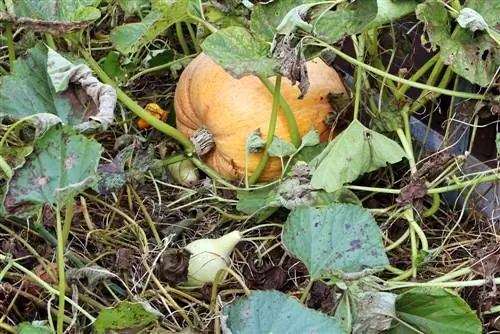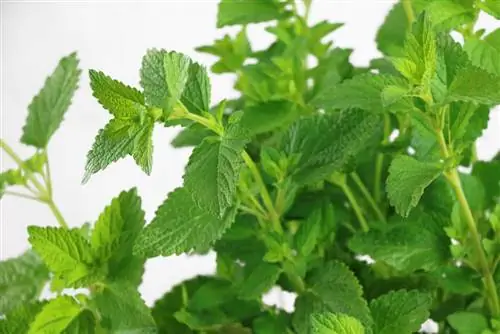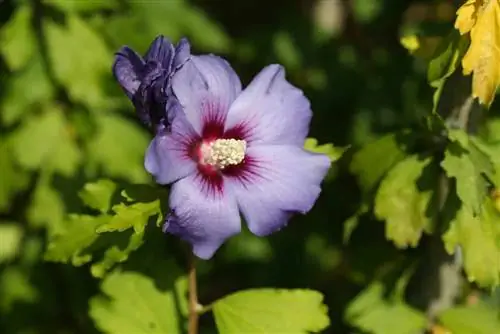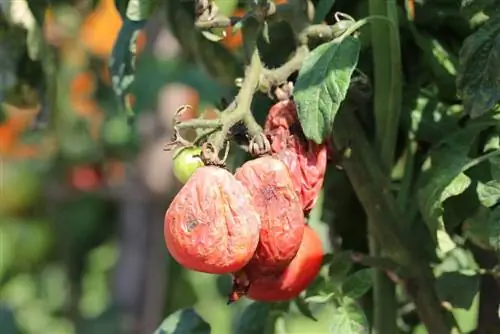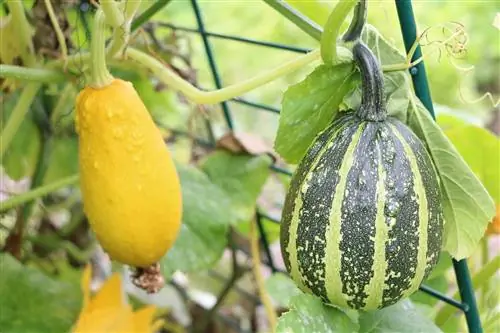- Author admin [email protected].
- Public 2023-12-17 03:39.
- Last modified 2025-01-24 12:45.
With more than 800 varieties of pumpkin, it is difficult to keep track of which ones are edible and edible as pumpkins. Everyone knows Hokkaido or butternut squash. But there are also many other varieties that can be used in the kitchen and are very tasty. The following list is intended to provide information about which types of pumpkin are still suitable for the kitchen.
Hokkaido pumpkin
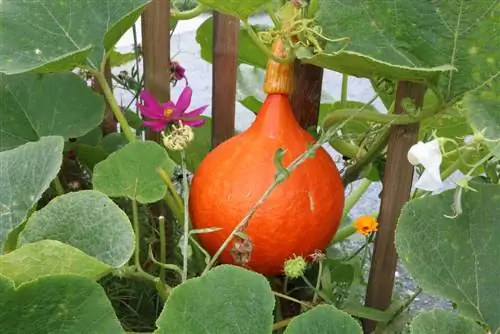
The Hokkaido pumpkin is also known as potimarron, chestnut or onion pumpkin. It is one of the giant pumpkin varieties and is the tastiest and therefore the most commonly used pumpkin for a wide variety of dishes. When the fruits weigh around one to two kilograms, they are ready for processing. The Hokkaido has the following characteristics:
- bright orange color
- reminiscent of large onions in shape
- the peel can be cooked and consumed
- fine aroma of chestnuts
- can be prepared as a casserole, tart or soup
- also tastes fried or baked
- cooking the peel increases the aroma
Tip:
The Hokkaido pumpkin is the most frequently mentioned pumpkin in the many recipes that are circulating on various sites on the Internet. This is mainly because it is so easy to prepare as it is very soft overall and does not need to be peeled.
Butternut Squash
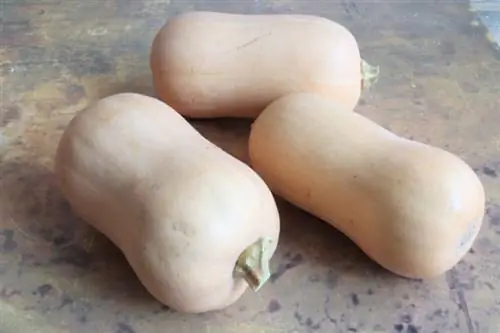
The butternut squash is easy to recognize because of its pear-shaped appearance. If it weighs around one to two kilos, it is ready for use in the kitchen. Since the variety has very few seeds, it produces more pulp. It also has the following properties:
- belongs to the musk gourds
- smells slightly of musk after cutting
- can be eaten raw or cooked
- has a delicate aroma of butter
- green, unripe fruits taste better
- cream to brown when ripe
- needs a warm, humid climate to grow
- growing in a greenhouse in this latitude
Tip:
Most late pumpkin varieties can usually be stored for a long time in a dark and not too warm, dry place. To do this, however, the shell must be undamaged. Summer squashes, on the other hand, can also be frozen before they have been processed.
nutmeg pumpkin
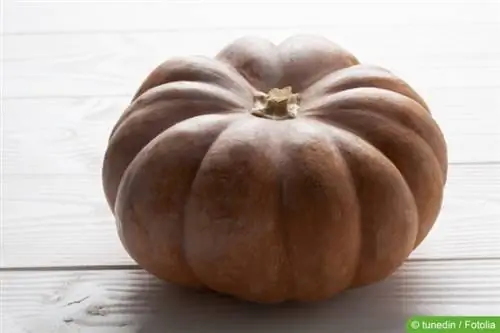
The nutmeg pumpkin, or Muscade de Provence, is a very large variety of pumpkin. The fruit can weigh up to 20 kilos. The pumpkin is also quickly recognized by its distinctive appearance due to the many ribs. The tasty pumpkin variety is often prepared as a pure vegetable, but also for fillings. The nutmeg pumpkin also has the following properties:
- very aromatic and juicy
- can be prepared both raw and cooked
- Color between dark green to light brown
- Flesh between yellow and orange-red
- undemanding in care
- can be stored for a long time after harvest
- slightly sour nutmeg note
- particularly suitable for exotic dishes
- belongs to the musk gourds
- can be eaten with peel if cooked for a long time
Tip:
A ripe pumpkin, regardless of the variety, can be recognized by its hollow sound when tapped on it.
Patisson pumpkin
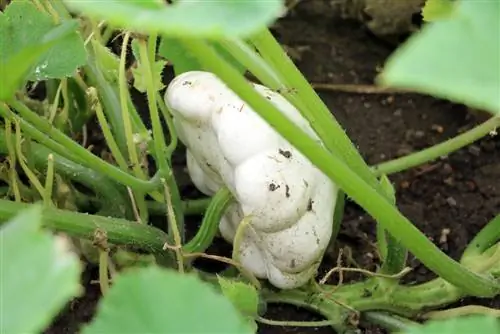
The shape of the patisson pumpkin is reminiscent of a UFO. It is available in different colors between white, yellow, green or two-tone. The fruit is quite small with a diameter of 10 to 25 centimeters and can therefore also be cultivated in a pot on the terrace or balcony. Unfortunately, the variety is not suitable for long storage and should therefore be processed as quickly as possible after harvesting. However, for longer storage, the patisson is very suitable for sour pickling. It also has the following properties:
- can be eaten raw and whole with peel
- can be well stuffed and cooked in the oven
- other names Courgette, Squash or Ufo
- are harvested with a weight of 500 grams to one kilo
Tip:
Pumpkin used to be considered a “poor man's food” and was mostly used as animal feed, but fortunately this has changed today. All pumpkin varieties are very he althy and contain many valuable minerals and vitamins. These include calcium, potassium and zinc as well as vitamins A, C, D and E.
Spaghetti Squash
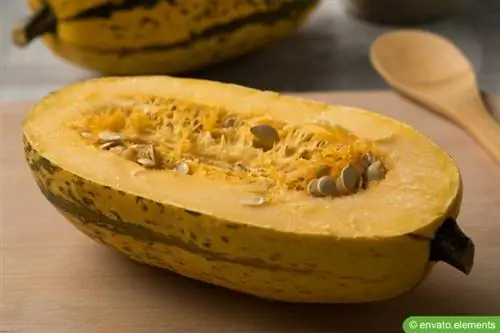
The spaghetti squash owes its name to its fibrous pulp, which is reminiscent of spaghetti, especially after cooking or baking. The fruits weigh up to two kilograms and have an oval-elongated to rounded shape. The color of the shell varies between cream and sunny yellow. It has the following properties:
- can be cooked with peel
- then cut in half and remove the pulp
- Variety still relatively unknown in this latitude
- originally from Asia
- warm, humid climate preferred
- Cultivation Ideally in a greenhouse
- Appearance is reminiscent of a honeydew melon
Tip:
The spaghetti squash doesn't require much to prepare. It is simply cooked whole and seasoned with pepper, s alt and parmesan before consumption. Ideal as a side dish for meat dishes.
Yellow hundredweight
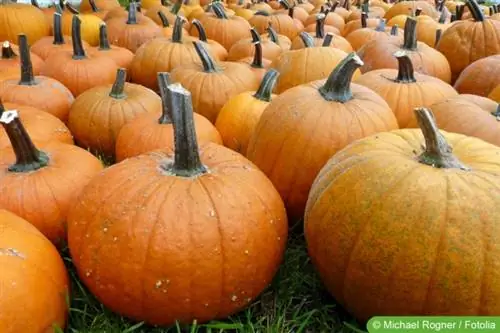
The yellow or giant quintal is a round, large giant pumpkin. It can weigh up to 50 kilos and is therefore often bred by hobby gardeners to set a record. But it is also very tasty and is therefore often chosen for various food preparations. This giant pumpkin, which belongs to the same family as the Hokkaido pumpkin, also has the following properties:
- is particularly suitable for sweet dishes
- will be hollowed out on Halloween
- orange peel and yellow flesh
- Shell is theoretically edible
- However, it is very hard and will therefore be removed
Buttercup Squash
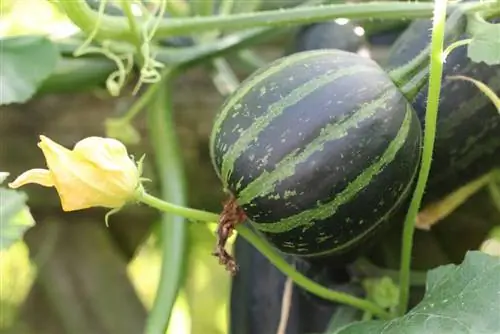
The Buttercup is a small, round pumpkin that, like the Turk's turban, also has a cap-like attachment. The peel is dark green, with the flesh being orange. The buttercup pumpkin, which is still little known in these latitudes, has the following properties:
- very hard shell
- not suitable for consumption
- peeling is very difficult
- so it's better to hollow it out
- Bowl can be used as a bowl at the table
- can be baked, eaten as a casserole or soup
Baby Bear
The Baby Bear is a very small variety with a diameter of ten centimeters when the fruit is ripe. The grooved, dark orange peel makes the fruit look very decorative. The variety is therefore also very suitable for cultivation in a bucket on a balcony or terrace. The Baby Bear also has the following properties:
- used for desserts or soups
- very hard shell
- should be peeled before consumption
- the flesh is yellow
Jack be Little
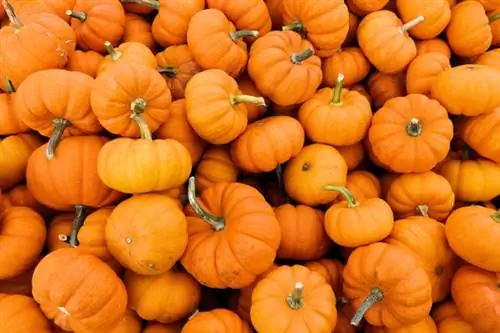
One of the very decorative pumpkins is the Jack be Little, which only has small fruits that usually only weigh between 150 and 300 grams. Since this type of pumpkin is one of the mini garden pumpkins, it is often sold in stores as an edible ornamental pumpkin. Jack be Little also has the following properties:
- also very tasty raw
- orange, firm flesh
- Aroma of chestnuts when cooked
- can be used in many dishes
- in salads, soups, casseroles
If you grow a Jack be Little in your garden, you can enjoy the decorative fruits over the summer until they are harvested for the kitchen in the fall. Since the fruits are not very large or heavy, the variety is also suitable for cultivation in a pot on a balcony or terrace.
Sweet Dumpling
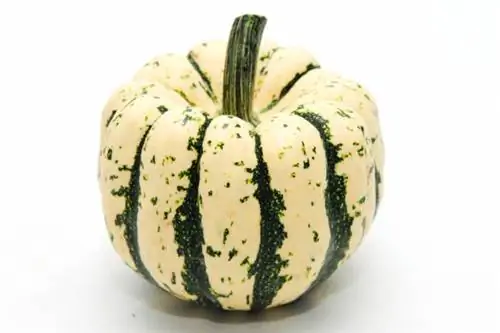
The Sweet Dumpling originally comes from Mexico and is also known as Patidou. The small fruits are ripe when they weigh between 300 and 600 grams. In contrast to many other types of pumpkin, the Sweet Dumpling, as the name suggests, tastes very sweet and has an aroma of chestnuts. This variety also has the following properties:
- can be cooked whole
- firm, crunchy flesh, even after cooking
- Color of the bowl is reminiscent of ornamental pumpkins
- yellow with rich green stripes
The sweet dumpling can also be cultivated on the balcony or terrace due to the small, decorative fruits.
Turkish turban/bishop's hat
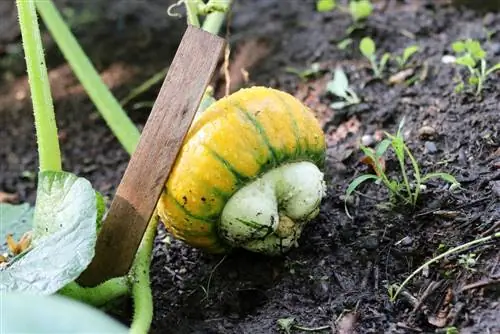
This pumpkin variety is known by two names; it is available either as a Turk's turban or as a bishop's hat. The reason for the names is clear from the appearance of the fruit. Because this is very unusual and is actually reminiscent of a turban. This is because during growth the flower base remains as a ring, around which a different colored and bulging pulp then forms. The Turkish turban also has the following properties:
- very difficult to cut due to the shape
- medium round and flat with attachment that is reminiscent of a hat
- is therefore often used as a soup bowl
- To do this, hollow out the pulp with a spoon and prepare it
- then pour it back into the bowl as soup
- has a decorative side effect on the table
- Fruit weighs between one and two kilos
- Peel not edible
Tip:
If you work according to the recipe, you will find the quantities of pumpkin pulp to be used here. So it can be assumed that a kilo of pumpkin as a whole offers around 600 to 700 grams of pure pulp that can be used.

